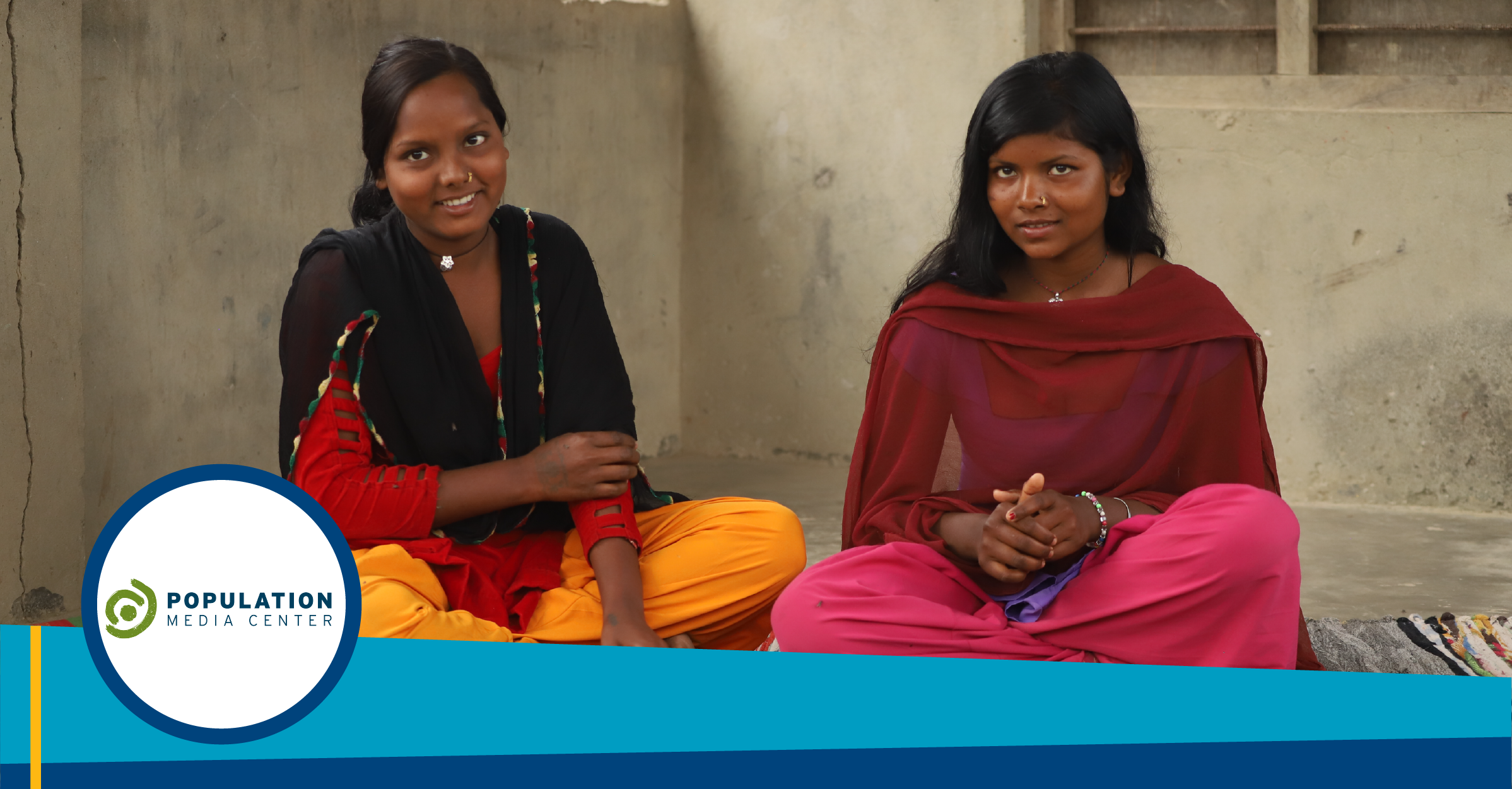Advancing Collaboration with Population Media Center
About the Organization
Population Media Center’s (PMC) reproducible formula for creating hit entertainment works across people, places, and media environments and it’s designed to impact multiple social, health, and environmental challenges. They engage audiences, change ideas, and empower people to make better-informed decisions.

Featured Guest:
Stephanie Tholand,
Director of Program and Partnership Development
Population Media Center
Approach to Collaboration
We seek collaboration with an array of partners on every PMC project – if it hasn’t already been finalized in the proposal stage, it is an immediate focus once a project is approved. We offer a particular specialty expertise that benefits hugely from the inputs of and coordination with technical experts, service providers, and complementary media interventions. We aim to engage partners for collaboration in our projects from each of those three groups every time. On several occasions in recent years, both with funders and fellow implementers, we’ve been able to collaborate on project design from the very beginning ideation stages. When we collaborate with funders, those ideas get funded, but some really exciting ones we design with other implementers can struggle to get traction without that initial funder buy-in.
Application of the 9 Considerations for Collaboration
Build Trust
We are a constantly-learning organization, and this benefits our partnerships because we can share information on previous successes and learning opportunities, building trust. We are also always quite transparent in discussions about where we have value-add and when we would not be the right partner. We are willing to recommend other partners and ideas for such projects.
Have a Vision
As a mission-driven organization focused on driving social norm change, long-term impacts and objectives are part and parcel of our work. By articulating a clear vision of potential collaborative impact, we invite others to think on the same level with us. That said, when seeking to align with collaborators on a shared vision (and the steps needed to progress towards it), we must know clearly in advance which points we feel are critical and those which can flex to accommodate points of their vision. It can be challenging to collaborate around those long-term visions when many organizations by choice or necessity are focused on the immediate day-to-day and putting out of fires.
We take a multi-issue approach to our programming by examining the factors that interplay with a problem. With the understanding that change requires a complex and long-term approach, we identify multiple leverage points and proceed step by step to achieve incremental change.
Seek to Assure the Success of Your Collaborators
We find it’s key to establish MOUs at the outset of every partnership, so that we together think through the expectations and specific roles and contributions of each partner toward achieving the goal. During implementation, we host periodic project advisory committee meetings where all partners take stock of progress to date and review areas that need to adapt. It can be challenging to ensure all parties attend these regularly, and I think we could better frame this around our collective outcomes and expectations, so that it’s not ‘just another meeting.’
Take Stock
PMC is an organization with a niche approach and strategy, so this approach is a must for us and fits naturally into every pitch we make. We know that we could do our intervention as a standalone project and that it would be good, but we readily admit that it would be hugely strengthened by collaborating with partners whose activities and strategies fill in the gaps of what we are able to provide and offer.
Start Small
Yes and no. We often have eyes for big, expensive collaborative projects, which generate a lot of enthusiasm for the collaboration. I can see that short-term, inexpensive projects allow you to uncover and resolve initial wrinkles in your working together, but a disadvantage can be that it does not generate the same excitement. I do believe that confidence and willingness to trust can be established through open, earnest dialogue, no matter the size of the project. Each organization having a positive reputation that precedes such dialogue can also support the development of eager and trusted collaboration. That said, aiming big to start off can backfire on you: Sometimes you’re not able to get a big project off the ground together, due to lack of funding, for example. We have previously been successful in developing collaborative project designs on a large scale, but have then been unable to put them into implementation, and have found that our collective energy for making something happen together falls away or becomes one-sided.
Fail Fast, and Build Rigorous Feedback Loops
We focus on a need for feedback and response from partners during the initial opening months of a project. MOUs help to establish these expectations for feedback and engagement. We need to realize early enough on if a partner isn’t going to meet those expectations, so that we can seek replacements – after a certain point, it’s too late to make a replacement, and the quality of the intervention and its impacts will be diminished.
Take a Portfolio Approach
As the head of our new business development arm, this consideration resonates deeply with me. The gestation period on new projects coming to life varies wildly, so I need to keep several ‘pots on the stove’ and see which one we can get to boil first. I am a deep believer that exciting collaboration is one of the more effective approaches to building momentum behind a project, with funders and additional collaborators. So, we launch our exploratory efforts with the goal of identifying potential exciting collaboration opportunities, instead of just following the money.
Consider Non-Traditional Partners
While we don’t actively seek out the non-traditional partners, we are willing to collaborate with any kind of partner if it makes sense and complements our work. Collaboration with corporations has always been a challenge for us, in figuring out how to approach and get in the door with an idea that grabs them.
This is especially relevant for PMC when it comes to keeping up with the constantly changing media market and media consumption platforms and preferences around the world. A few years back, I heard a brief pitch from a just-started company that was launching a mobile-platform for info services, and I thought ‘they’re headed in a direction that PMC should be a part of,’ and spoke with them immediately afterwards. We’re now working with this company called Viamo in several countries in a very complementary meshing of our specialties.
Keep Your Donors Apprised of Your Collaborations
Our donors love to hear about partnerships and collaborations because our donors recognize the interconnected nature of multiple issues and roles required to create an ecosystem of change. Many of our regular communications (newsletters, website, social media) share new and existing collaborations — and what those partnerships are achieving. We actually have a newsletter dedicated to sharing such new and exciting partnership developments.
Future Collaborations
An ideal collaboration would be totally driven by dedication to driving long-term positive change on shared objectives. And jockeying for money would be removed from the picture. Funding would be both already committed so that it brings concrete clarity to the design thinking as well as at a level that allows for expansive ideation. So, basically, it would be flipped from the typical donor-driven project design and funding approach!
More specifically, we’d love to sit down, think big, and co-design collaborative projects with corporations that we know are active in supporting social good / development initiatives and aligned with PMC’s priority areas of women’s empowerment, sustainable living, and gender equality. Examples of such corporations include Unilever, Always, Vodafone, and MasterCard. With a large corporate partner involved, we believe that PMC’s pro-social mass-media entertainment approach could become an even more effective vehicle for driving large-scale impact on these issues.
To learn more, go to www.populationmedia.org, or contact partnerships@populationmedia.org
This article was composed by Rachel Romana Liu.

